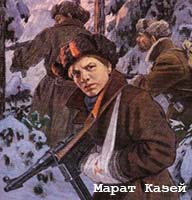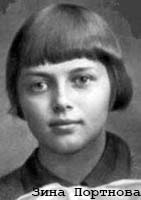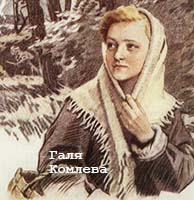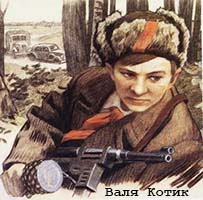
Борисова Лариса Васильевна, учитель английского языка
Методическая разработка урока английского языка
Твои сверстники во время Великой Отечественной Войны
Пояснительная записка
Данная методическая разработка урока английского языка посвящена Великой Победе. Поколения, выросшие без войны, должны быть благодарны людям 30-40х годов прошлого века, тем, кто вынес все тяготы и лишения войны 1941-1945гг. Осталось немного людей, которым лозунг «Всё для фронта, всё для Победы» знаком не понаслышке. Не только всё для Победы, но и все: мужчины и женщины, старики и дети. Немалую роль в борьбе с фашизмом сыграли дети, подростки, пионеры.
Главная причина выбора темы методической разработки состоит в том, что
современные подростки мало информированы о жизни и подвиге своих сверстников в 1941-1945гг. Содержание текстов урока направлено на воспитание гражданина, патриота своей Родины, чувства долга и уважения к погибшим.
Цель данной методической разработки – описание использования метода «Ралли» [1] при ознакомлении с новым содержанием.
Задачи: предоставить материал
1) для формирования/развития умения изучающего чтения;
2) для развития логического мышления.
Материалы методической разработки урока предназначены для работы с учащимися 7 классов. Урок проводится в помещении, оборудованном проектором, экраном. При отсутствии проектора слайды можно заменить фотографиями, репродукциями картин по теме.
Ход проведения урока
«Твои сверстники во время Великой Отечественной Войны»
Задачи урока: формировать, развивать патриотического отношения к Родине, воспитание чувства долга перед Родиной, уважение к Отечеству; мотивировать учащихся знать историю своей страны; учить навыкам изучающего чтения; развивать логическое мышление.
1. Организационный момент. Учитель и учащиеся приветствуют друг друга.
2. Краткое вступительное слово учителя о годовщине Победы.
3. Этап проблематизации, постановки темы урока. Учитель предлагает учащимся просмотреть на экране подготовленные слайды (фотографии, картины) и назвать тему урока.
4. Учитель мотивирует учащихся узнать о жизни сверстников во время Великой Отечественной Войны (далее ВОВ) и заполнить таблицы со следующей информацией:
5. Имя, возраст, город, что делал, как увековечена память. Время работы с текстами -20 минут. Тексты и фотографии пионеров-героев находятся в свободном доступе на стенах кабинета. Используется метод «Ралли» .
6. Работа в парах. Само и взаимоконтроль выполнения задания. Обсуждение пунктов таблицы в паре. Работают 3-5 минут.
7. Работа в группах. Учитель предлагает каждой группе (по 3 человека) выбрать один из текстов и восстановить его структуру. Тексты разрезаны на несколько частей. Время работы в группе 5 минут.
8. Затем учитель предъявляет фотографию героя, а представители от группы читают тексты вслух.
9. Этап рефлексии. Учитель предлагает подвести итоги урока с помощью синквейнов, посвященных героям. Можно зажечь свечу памяти.
10. Домашнее задание. Ответить на вопрос: Whose name would you call a street in your town? Why?
Технологическая карта урока
Класс: 7
Тема урока: Your age-mates during the Great Patriotic War
Планируемые результаты:
Личностные: формирование патриотического отношения к Родине, воспитание чувства долга, уважения к Отечеству.
Метапредметные: ученик умеет взаимодействовать с окружающими, работать в паре, группе; рационально планирует свой учебный труд, работает в соответствии с планом; владеет основами самооценки, самоконтроля; умеет строить умозаключения и делать выводы.
Предметные: ученик умеет найти запрашиваемую информацию в текстах и оформить её в таблице; развивает умения изучающего чтения, чтения вслух.
|
Этапы урока |
Деятельность учащихся |
Социальные формы |
материалы |
оборудование |
Деятельность учителя |
|
Оргмомент1-2мин |
Приветствуют учителя |
класс |
|
|
Настраивает учащихся на деловой лад |
|
Проблематизация 2-3мин |
St: we’ll speak about children, their lives during the war. |
класс |
презентация |
проектор |
- On May,9 all people in our country will celebrate the 75th anniversary of the great Victory. Look at the slides and say who we’ll have a talk about. Let’s know more about these people. Read the texts on the walls and fill in the charts. You have 20 minutes. |
|
Семантизация 20 мин |
1.Учащиеся заполняют таблицы
|
индивидуально |
Фотографии Тексты о пионерах-героях |
мебель |
Следит за выполнением задания, оказывает при необходимости помощь
|
|
5 мин |
2. осуществляют взаимоконтроль, работают с информацией таблицы |
пара |
Таблицы с информацией |
мебель |
Организует работу в парах. -The time is up. Now you are to work in pairs and check the information. You have 5 minutes.Слушает выборочно пары |
|
3-5 мин |
3. восстанавливают логические связи в текстах. У каждой группы отдельный текст. |
Группы по 3-4 человека |
Разрезанные тексты |
мебель |
-Thank for your work. Let’s see how you remember the ideas from the texts. Please arrange groups in three people and organize the information in the texts in correct order. You have up to5 minutes. |
|
Контроль 5мин |
Представители групп читают собранный текст. |
Индивидуально |
Тексты |
|
-Stop your work. Let’s listen to your texts. Look at the photo. Whose group has the text about Marat Kazei? Group 1, please… |
|
Рефлексия 5-7 мин |
Учащиеся сочиняют синквейны о пионерах-героях |
группы |
|
|
-To sum up, let’s burn a memory candle and make up a cinquain about the heroes. |
|
Домашнее задание |
Записывают вопрос в тетрадь |
индивидуально |
Дневник, тетрадь |
|
-Thank you for your work. Will you write a question to answer: Whose name would you call a street in your town? Why? -Good bye.
|
Методические рекомендации
Урок «Your age-mates during the Great Patriotic War» проводится в классе. Как вариант можно провести в музее (школы, города). Атмосфера музея даст учащимся соответствующее настроение. Предварительно с администрацией музея нужно будет обговорить методы работы с учащимися, время посещения, материалы для использования на уроке. Для проведения урока необходимо подобрать соответствующее музыкальное сопровождение презентации для введения в тему урока. Это могут быть песни Д.Тухманова, Б.Окуджавы, А.Александрова ит.д. Можно использовать фрагменты художественных фильмов о ВОВ.
Подводя итоги урока, следует отметить все синквейны, созданные детьми, оценить лучшие. Следует также оценить учащихся, которые читали отрывки вслух.
Продумывая оформление к данному уроку, следует обратить внимание, где будут размещаться тексты для работы. Подход к текстам должен быть свободным, чтобы учащиеся работали, не теряя времени при чтении. Текст должен находиться на высоте глаз ребенка, не вызывать дополнительных трудностей. Размер шрифта не менее 14-16 кегль.
Приложение
1. Тексты для работы
Volodya Dubinin 
The pioneer-hero Volodya Dubinin was one of the members of the partisan detachmrnt that fought in the quarries near the city of Kerch. He fought on a par with adults: he brought ammunition, water, food, went to reconnaissance. Since Volodya was still very small, he could get to the surface on the very narrow ashes of the quarry and unnoticed by the Nazis and scout the fighting environment.
The boy died on January 2, 1942, helping to clear the passages to the quarries. Volodya is buried in the mass grave of the partisans in the center of Kamysh-Burun port in Kerch. The young hero was awarded with the "Order of the Red Banner” posthumously.
In 1962, the feature film "The Street of the Youngest Son" was shot. It was an adaptation of the novel of the same name by Leo Kassiel and Max Polyanovsky, dedicated to the pioneer-hero Volodya Dubinin.
Marat Kazei
The Nazis broke into the Belarusian village where Marat lived with his mother, Anna Alexandrovna Kazei. In the autumn, Marat no longer had to go to the fifth grade of school. The building of the school fascists turned into their barracks.
Marat's mother Anna Alexandrovna was captured for her connection with the partisans, and soon the boy learned that his mother had been hanged in Minsk. Anger and hatred for the enemy filled the boy's heart. Together with his sister, a member of the Komsomol, the pioneer Marat Kazei went to the partisan detachment to the Stankov forest. He became a scout at the headquarters of the partisan brigade. He Infiltrated into enemy garrisons and delivered valuable information to the command. Using this data, the partisans developed a daring operation and defeated the fascist garrison in the city of Dzerzhinsk.
The boy participated in the battles and invariably showed courage, fearlessness, together with experienced bombers he mined the railway. Marat died in battle, fighting to the last bullet, and when he had only one grenade left, he let the enemies closer and blew them up with him. For courage and bravery, the pioneer Marat Kazei was awarded with the title of Hero of the Soviet Union. A monument to the young hero has been erected in the Belarusian capital Minsk.
Lenya Golikov
Lenya grew up in the village of Luchino in the Novgorod region, on the banks of the Polo River, which flows into the legendary Ilmen Lake. When his native village was captured by the enemy, the boy joined the partisans. More than once he went to reconnaissance, brought important information to the partisan group. Enemy trains and cars flew under the slope, bridges were collapsed, enemy warehouses were burned.
There was a battle in his life. Lenya fought one-on-one with a fascist general. A grenade thrown by a boy hit the car. A Hitler man with a briefcase in his hands got out of it and, shooting back, ran away. Lenya went after him. He chased the enemy for almost a kilometer and finally killed him. There were very important documents in the portfolio. The headquarters of the partisans immediately transported them by plane to Moscow
In his short life there were still many fights, and he never wavered, fighting shoulder to shoulder with adults. Lenya was killed in a battle near the village of Ostraya Luka in the Pskov region in the winter of 1943. On April 2, 1944, of the title of Hero of the Soviet Union was assignment to the pioneer-partisan Lenya Golikov.
Zina Portnova
The war caught the Leningrad pioneer Zina Portnova in the village of Zuya, where she came on vacation - it is not far from the station Obol Vitebsk region. An underground Komsomol youth organization, the Young Avengers, was established in Oboli, and Zina was elected as a member of its committee. She participated in daring operations against the enemy, in sabotage, distributed leaflets, she conducted reconnaissance on the instructions of the partisan detachment.
In December 1943, she was returning from a mission. In the village of Mostishe, she was betrayed by a traitor. Fascists captured a young partisan, tortured her. The enemy's answer was the silence of Zina, her contempt and hatred, her determination to fight to the end. During one of the interrogations, selecting the moment, Zina grabbed a gun from the table and shot at the Gestapo at point-blank range. The officer who ran into the room was also killed. She tried to escape, but the Fascists overtook her.
The brave young pioneer was brutally tortured, but until the last minute she remained steadfast, courageous, indomitable person. And the Motherland celebrated her feat with her highest title - the title of Hero of the Soviet Union.
Sasha
Borodulin 
Over the village where Sasha lived, enemy bombers flew constantly. The native land was trampled by the fascists. Young pioneer Sasha Borodulin could not put up with it, he decided to fight the fascists. Killing a fascist motorcyclist, he took the first combat trophy - a real German machine gun. Day after day he conducted reconnaissance. Not once he went on the most dangerous tasks. On his account there were many destroyed cars and enemy soldiers.
The chastisers tracked down the partisans. The detachment had been leaving them for three days, twice the group broke out of the environment, but again the enemy ring was closer and closer. Then the commander called the volunteers - to cover up the departure of the detachment. Sasha stepped forward the first. Five heroes took the fight. One by one, they died. Sasha was left alone. It was still possible to depart - the forest is close, but every minute is so dear to the detachment that will hold the enemy, and Sasha led the battle to the end. He allowed the fascists to close the ring around him, snatched the grenade and blew them up with him.
Sasha Borodulin was awarded with the Order of the Red Banner in the winter of 1941 for his dangerous tasks, for his courage, resourcefulness and courage.
Galya
Komleva 
When the war began, and the nazis approached Leningrad, the young pioneer leader of the secondary school Anna Petrovna Semenova was left to work underground in the village of Tarnovichi in the south of Leningrad region. To communicate with the partisans, she picked up the most reliable of their pioneers, and the first among them was Galina Komleva. She was brave, inquisitive girl. In her six school years, she has been awarded with books with the caption "For excellent study" six times.
The young messenger brought from the partisans tasks of his guide, and her reportings were transferred to the detachment together with bread, potatoes, food. Once, when the messenger from the partisan detachment did not come to the meeting place in time, Galya, half-frozen, snuck into the detachment, passed the report and, a little warmed, hurried back, carrying a new task to the underground organization.
Together with a member of the Komsomol, Galya wrote leaflets and threw them around the village at night. The fascists tracked down, captured the young members of the underground organization. She was held in the Gestapo for two months. She was severely beaten, thrown into the cell, and in the morning again taken for questioning. She didn't say anything to the enemy, she didn't give anyone away, and for that the young patriot was shot. The feat of Galya Komleva Motherland was marked by the Order of the Patriotic War of the 1st degree.
Valya
Kotik 
Valya Kotik was born on February 11, 1930 in the village of Khmelevka Shepetovsky district of Khmelnitskaya region. He studied at school number 4 in Shepetovka, Valya was a recognized leader of pioneers, his schoolmates. When the Nazis broke into Shepetovka, Valya Kotik and his friends decided to fight with the enemy. The guys collected weapons on the site of the battles, which they transported to the detachment. Looking at the boy, the Communists entrusted Valais to be a messenger and a scout in his underground organization. He learned the location of enemy posts, the order of changing the guard.
The Fascists planned a punitive operation against the partisans, and Valya, tracking down Hitler's officer, who led the punitives, killed him.When the arrests began in the city, Valya and his mother and brother Victor joined the partisans. The pioneer, who had just turned fourteen, fought shoulder-to-shoulder with the adults, liberating his native land. On his account - six enemy echelons, that were blown up on the way to the front.
Valya Kotik was awarded with the Order of the Patriotic War of the 1st degree, the medal "Partisan of the Patriotic War" of the 2nd degree. Valya Kotik died as a hero, and the Motherland posthumously awarded him with the title of Hero of the Soviet Union. In front of the school where this brave pioneer studied, a monument was placed to him. And today the pioneers give the hero a salute. In 1957, the feature film "Eagle" was shot, the main character of which was a young partisan Valya Kotik (prototype Hero of the Soviet Union Valya Kotik).
2. Таблица для заполнения полученной информации
|
name |
age |
where |
when |
What he/she did |
Additional information |
|
|
|
|
|
|
|
|
|
|
|
|
|
|
3. Синквейн
e.g. Zina Portnova
Young, brave
Distributed leaflets
I’m proud of her
Heroine
4. Авторы музыкальных произведений
А.Александров, Лебедев-Кумач «Вставай, страна огромная»
Б.Окуджава «Десятый наш десантный батальон»
В.Мурадели, А.Соболев «Бухенвальдский набат»
Список литературы и интернет ресурсов
1.Дети военной поры/ Сост. Э.Максимова.-2-е изд., доп.-М.: Политиздат, 1988.-319с.
2.Как одолеть ФГОС? (энциклопедия методов обучения)/ Сост.И.В.Борисова, И.Н.Самкова, Е.В.Попова.-Абакан,изд-во ГАОУ РХ ДПО «ХакИРОиПК» «Роса»,2017.-55с.
3.edusite.ru
4. sites.google.com
5. https://nsportal.ru
6. music70-80.narod.ru/war
7. nnmama.ru/news/week/news_99975
8. myshared.ru/slide/134303
9. https://uslide.ru/istoriya/32615-pioneri-geroi-velikoy-otechestvennoy-voyni.html
Скачано с www.znanio.ru
[1] Ралли – метод изучения новых знаний (из: Как одолеть ФГОС(энциклопедия методов обучения)/Сост. И.В.Борисова, И.Н.Самкова, Е.В.Попова. -Абакан, изд-во ГАОУ РХ ДПО «ХакИРОиПК» «Роса». 2017. – с.26
Материалы на данной страницы взяты из открытых источников либо размещены пользователем в соответствии с договором-офертой сайта. Вы можете сообщить о нарушении.